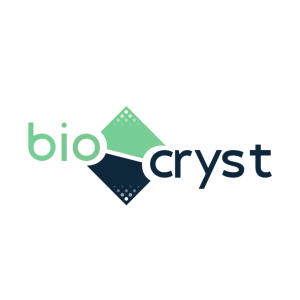BioCryst Presents New Real-world Evidence Showing Reductions in Attack Rates in HAE Patients with Normal C1-Inhibitor after Beginning ORLADEYO® (berotralstat) Treatment
Rhea-AI Summary
BioCryst Pharmaceuticals has presented new real-world evidence indicating that ORLADEYO® (berotralstat) reduces attack rates in HAE patients with normal C1-inhibitor levels. A study involving six patients revealed that five experienced a 75-100% reduction in HAE attack rates after six months of treatment, with one patient showing a 29% reduction.
Additionally, new results highlight the adverse health outcomes associated with attenuated androgen use for HAE prophylaxis, emphasizing the need for safer, targeted therapies as recommended by EAACI guidelines. The study assessed 108 studies and found that adverse outcomes include increased cardiovascular events, liver damage, and cancer, reinforcing the importance of accessible, safer treatment options.
Positive
- Berotralstat shows 75-100% reduction in HAE attack rates in five out of six patients after six months.
- No adverse events related to berotralstat were noted in five of the six patients.
- New real-world evidence supports the efficacy of ORLADEYO® for patients with normal C1-inhibitor levels.
- Study highlights the importance of targeted therapies for HAE as recommended by EAACI guidelines.
- Data presented at EAACI Congress, increasing visibility and credibility.
Negative
- One patient experienced gastrointestinal symptoms upon initiation of berotralstat treatment.
- Adverse health outcomes associated with attenuated androgen use include increased cardiovascular events, liver damage, and cancer.
- Reluctance among physicians to use attenuated androgens has increased, potentially affecting patient treatment options.
- Study indicates serious long-term risks of using attenuated androgens for HAE prophylaxis.
- Patient and physician concerns about the tolerability and adherence to attenuated androgens.
Insights
The new evidence indicating significant reductions in attack rates for HAE patients with normal C1-inhibitor levels after starting ORLADEYO® (berotralstat) is noteworthy. This finding can potentially change the treatment landscape for HAE-nC1-INH patients, who historically face challenges in diagnosis and treatment due to the absence of easily measurable biochemical markers. The data showing a 75 to 100
Additionally, the patient population involved in this study is relatively small, limiting the generalizability of the results. However, the data is promising and lays a foundation for more extensive research, potentially leading to broader adoption of berotralstat as a first-line treatment for HAE-nC1-INH patients.
From a market perspective, the positive clinical outcomes associated with ORLADEYO® (berotralstat) in reducing HAE attack rates are likely to reinforce BioCryst Pharmaceuticals' position in the HAE treatment market. The evidence supports the efficacy and safety of berotralstat, which could drive its adoption over other prophylactic treatments, especially those associated with significant adverse effects like attenuated androgens. Historically, attenuated androgens have been linked to various serious health risks, including increased cardiovascular events and liver damage, which have caused reluctance among physicians to prescribe them. As such, ORLADEYO® offers a much-needed alternative that aligns with current World Allergy Organization/EAACI guidelines recommending targeted therapies as first-line long-term prophylaxis.
The broader implication is a potential increase in market share for BioCryst, especially if further studies replicate these results. However, investors should keep in mind that the competitive landscape in the HAE treatment market is evolving, with several new therapies being developed. The key for BioCryst will be to gather more extensive real-world data and continue to demonstrate the long-term benefits and safety of berotralstat to maintain and grow its market position.
The presentation of new real-world evidence showing the efficacy of ORLADEYO® (berotralstat) in reducing HAE attack rates can have several positive financial implications for BioCryst Pharmaceuticals. Firstly, demonstrating significant reductions in attack rates and minimal adverse effects can enhance the drug’s appeal to both patients and healthcare providers, potentially leading to increased sales and market penetration. Additionally, the study's alignment with global guidelines advocating for targeted therapies over traditional androgen treatments underscores the clinical relevance and demand for safer HAE prophylaxis options.
Financially, BioCryst can benefit from broader market adoption, which in turn could lead to improved revenue streams and profitability. Long-term, successful integration of ORLADEYO® into standard HAE treatment protocols may enhance investor confidence and support higher stock valuations. However, investors should remain cautious about the competitive dynamics within the pharmaceutical industry, as new treatments and generics could affect market share. Continuous innovation and accumulation of further supportive clinical data will be critical for sustaining growth.
Additional results from largest body of evidence on attenuated androgen use in HAE reinforce need for access to safer and more tolerable HAE prophylaxis options
RESEARCH TRIANGLE PARK, N.C., June 02, 2024 (GLOBE NEWSWIRE) -- BioCryst Pharmaceuticals, Inc. (Nasdaq: BCRX) today announced new real-world evidence showing that patients with hereditary angioedema (HAE) who have normal C1-inhibitor (HAE-nC1-INH) level and function had a reduction in monthly attack rates after starting oral, once-daily ORLADEYO® (berotralstat). The data were presented at the European Academy of Allergy and Clinical Immunology (EAACI) Congress in Valencia, Spain.
“The diagnosis of HAE patients with normal C1-inhibitor is complicated and often delayed by the lack of an easily measurable biochemical marker. This multicenter case series provides clinically relevant evidence that berotralstat can also reduce the frequency and duration of episodes in the C1 normal population,” said Dr. Isabelle Boccon-Gibod, department of internal medicine and immunology, Grenoble Alps University Hospital, who presented the findings at EAACI.
Six patients with HAE-nC1-INH were included in the analysis. All had received previous long-term prophylaxis (LTP), and one remained on concurrent LTP. After six months of treatment with berotralstat, five patients showed a 75 to 100 percent reduction of their HAE attack rate, and one patient, who was on a concurrent dose of tranexamic acid, showed a 29 percent reduction in their HAE attack rate.
No adverse events related to berotralstat were noted in five of the six patients. One patient experienced gastrointestinal symptoms upon initiation, which became milder after the first two weeks and did not lead to treatment discontinuation.
Adverse Health Outcomes and Patient and Physician Perspectives of Attenuated Androgen Use in Hereditary Angioedema
Additional new results presented at EAACI demonstrate the adverse health outcomes associated with attenuated androgen use as a prophylactic treatment for HAE. The study also documents that these adverse outcomes cause increased reluctance among physicians to use attenuated androgens in clinical practice. The study highlights the importance of access to recent targeted HAE prophylactic therapies, in line with current World Allergy Organization/EAACI guidelines which recommend that targeted therapies are utilized for first-line long term prophylaxis, and the use of androgens is reserved only as second-line long-term prophylaxis.
“This study presents the latest and largest body of evidence documenting that HAE prophylactic treatment with attenuated androgens is associated with short-term adverse outcomes and serious long-term risks that include increased cardiovascular events, liver damage, and cancer. The prevalent and wide-ranging adverse outcomes associated with attenuated androgen use in HAE reinforce that safer and more tolerable treatment options should be preferred and made accessible for HAE prophylaxis,” said Marcus Maurer, professor of dermatology and allergology at Charité - Universitätsmedizin Berlin and Fraunhofer Institute for Translational Medicine and Pharmacology.
The study assessed 108 prospective and retrospective studies published between January 1980 and July 2023 that reported quantitative outcomes associated with attenuated androgen use in patients with HAE. These included four clinical trials, 43 observational studies, 37 case reports/series, and 24 reviews. Studies of patient and physicians’ attitudes and perception of risk regarding attenuated androgens were also included.
Adverse outcomes associated with attenuated androgen use included increased body weight, menstrual irregularities, virilization, myalgia, acne and liver damage, including liver cancer. Patients and physicians cited concerns with the use of attenuated androgens related to tolerability, fear of adverse events, and long-term adherence. A three-part survey conducted in the United States noted that the unwillingness to prescribe attenuated androgens among physicians increased from 18 percent in 2010 to 60 percent in 2019, following approval of the first newer LTP treatments.
About ORLADEYO® (berotralstat)
ORLADEYO® (berotralstat) is the first and only oral therapy designed specifically to prevent attacks of hereditary angioedema (HAE) in adult and pediatric patients 12 years and older. One capsule of ORLADEYO per day works to prevent HAE attacks by decreasing the activity of plasma kallikrein.
U.S. Indication and Important Safety Information
INDICATION
ORLADEYO® (berotralstat) is a plasma kallikrein inhibitor indicated for prophylaxis to prevent attacks of hereditary angioedema (HAE) in adults and pediatric patients 12 years and older.
Limitations of use
The safety and effectiveness of ORLADEYO for the treatment of acute HAE attacks have not been established. ORLADEYO should not be used for the treatment of acute HAE attacks. Additional doses or dosages of ORLADEYO higher than 150 mg once daily are not recommended due to the potential for QT prolongation.
IMPORTANT SAFETY INFORMATION
An increase in QT prolongation was observed at dosages higher than the recommended 150 mg once-daily dosage and was concentration dependent.
The most common adverse reactions (≥
A reduced dosage of 110 mg taken orally once daily with food is recommended in patients with moderate or severe hepatic impairment (Child-Pugh B or C).
Berotralstat is a substrate of P-glycoprotein (P-gp) and breast cancer resistance protein. P-gp inducers (eg, rifampin, St. John’s wort) may decrease berotralstat plasma concentration, leading to reduced efficacy of ORLADEYO. The use of P-gp inducers is not recommended with ORLADEYO.
ORLADEYO at a dose of 150 mg is a moderate inhibitor of CYP2D6 and CYP3A4. For concomitant medications with a narrow therapeutic index that are predominantly metabolized by CYP2D6 or CYP3A4, appropriate monitoring and dose titration is recommended. ORLADEYO at a dose of 300 mg is a P-gp inhibitor. Appropriate monitoring and dose titration is recommended for P-gp substrates (eg, digoxin) when coadministering with ORLADEYO.
The safety and effectiveness of ORLADEYO in pediatric patients <12 years of age have not been established. There are insufficient data available to inform drug-related risks with ORLADEYO use in pregnancy. There are no data on the presence of berotralstat in human milk, its effects on the breastfed infant, or its effects on milk production.
To report SUSPECTED ADVERSE REACTIONS, contact BioCryst Pharmaceuticals, Inc. at 1-833-633-2279 or FDA at 1-800-FDA-1088 or www.fda.gov/medwatch.
Please see full Prescribing Information.
About BioCryst Pharmaceuticals
BioCryst Pharmaceuticals is a global biotechnology company with a deep commitment to improving the lives of people living with complement-mediated and other rare diseases. BioCryst leverages its expertise in structure-guided drug design to develop first-in-class or best-in-class oral small-molecule and protein therapeutics to target difficult-to-treat diseases. BioCryst has commercialized ORLADEYO® (berotralstat), the first oral, once-daily plasma kallikrein inhibitor, and is advancing a pipeline of small-molecule and protein therapies. For more information, please visit www.biocryst.com or follow us on LinkedIn.
Forward-Looking Statements
This press release contains forward-looking statements, including statements regarding future results, performance or achievements. These statements involve known and unknown risks, uncertainties and other factors which may cause actual results, performance or achievements to be materially different from any future results, performance or achievements expressed or implied by the forward-looking statements. These statements reflect our current views with respect to future events and are based on assumptions and are subject to risks and uncertainties. Given these uncertainties, you should not place undue reliance on these forward-looking statements. Some of the factors that could affect the forward-looking statements contained herein include: BioCryst’s ability to successfully implement its commercialization plans for ORLADEYO, which could take longer or be more expensive than planned; the commercial viability of ORLADEYO, including its ability to achieve market acceptance; the FDA or other applicable regulatory agency may require additional studies beyond the studies planned for products and product candidates, may not provide regulatory clearances which may result in delay of planned clinical trials, may impose certain restrictions, warnings, or other requirements on products and product candidates, may impose a clinical hold with respect to product candidates, or may withhold, delay, or withdraw market approval for products and product candidates; BioCryst’s ability to successfully manage its growth and compete effectively; risks related to the international expansion of BioCryst’s business; and actual financial results may not be consistent with expectations, including that revenue, operating expenses and cash usage may not be within management’s expected ranges. Please refer to the documents BioCryst files periodically with the Securities and Exchange Commission, specifically BioCryst’s most recent Annual Report on Form 10-K, Quarterly Reports on Form 10-Q, and Current Reports on Form 8-K, which identify important factors that could cause the actual results to differ materially from those contained in BioCryst’s forward-looking statements.
BCRXW
Contacts:
John Bluth
+1 919 859 7910
jbluth@biocryst.com
Niamh Lyons
+353 87 639 7083
nlyons@biocryst.com








